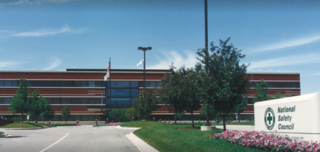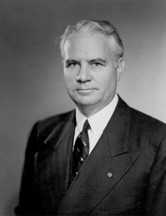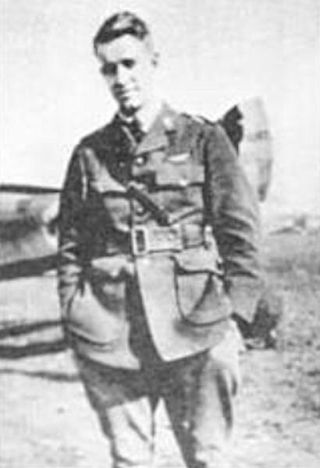Related Research Articles

Dwight David Eisenhower, nicknamed Ike, was an American military officer and statesman who served as the 34th president of the United States from 1953 to 1961. During World War II, he was Supreme Commander of the Allied Expeditionary Force in Europe and achieved the five-star rank as General of the Army. Eisenhower planned and supervised two of the most consequential military campaigns of World War II: Operation Torch in the North Africa campaign in 1942–1943 and the invasion of Normandy in 1944.

The 1956 United States presidential election was the 43rd quadrennial presidential election. It was held on Tuesday, November 6, 1956. Incumbent Republican President Dwight D. Eisenhower and his running mate, incumbent Vice President Richard Nixon, were re-elected, defeating for a second time Democrat Adlai Stevenson II, former Illinois governor. This election was the sixth rematch in American presidential history, a situation which would not occur again until 2024. It was the second time in which the winner was the same both times, the first being William McKinley's victories over William Jennings Bryan in 1896 and 1900. This was the last election before term limits established by the 22nd Amendment, which applied to Eisenhower, were effective.

Loyalty Day is observed on May 1 in the United States. It was proclaimed by President Dwight D. Eisenhower as a day for declaring loyalty to the United States of America and to acknowledge American history.
This section of the timeline of United States history concerns events from 1950 to 1969.

Orval Eugene Faubus was an American politician who served as the 36th Governor of Arkansas from 1955 to 1967, as a member of the Democratic Party. In 1957, he refused to comply with a decision of the U.S. Supreme Court in the 1954 case Brown v. Board of Education, and ordered the Arkansas National Guard to prevent black students from attending Little Rock Central High School. This event became known as the Little Rock Crisis. He was elected to six two-year terms as governor.

The First Taiwan Strait Crisis was a brief armed conflict between the People's Republic of China (PRC) and the Republic of China (ROC) in Taiwan. The conflict focused on several groups of islands in the Taiwan Strait that were held by the ROC but were located only a few miles from mainland China.

The 84th United States Congress was a meeting of the legislative branch of the United States federal government, composed of the United States Senate and the United States House of Representatives. It met in Washington, D.C. from January 3, 1955, to January 3, 1957, during the third and fourth years of Dwight D. Eisenhower's presidency. The apportionment of seats in the House of Representatives was based on the 1950 United States census.

The National Safety Council (NSC) is a 501(c)(3) nonprofit, public service organization promoting health and safety in the United States. Headquartered in Itasca, Illinois, NSC is a member organization, founded in 1913 and granted a congressional charter in 1953. Members include more than 55,000 businesses, labor organizations, schools, public agencies, private groups and individuals.

The Bricker Amendment is the collective name of a number of slightly different proposed amendments to the United States Constitution considered by the United States Senate in the 1950s. None of these amendments ever passed Congress. Each of them would require explicit congressional approval, especially for executive agreements that did not require the Senate's two-thirds approval for treaty. They are named for their sponsor, conservative Republican Senator John W. Bricker of Ohio, who distrusted the exclusive powers of the president to involve the United States beyond the wishes of Congress.

Dwight D. Eisenhower's tenure as the 34th president of the United States began with his first inauguration on January 20, 1953, and ended on January 20, 1961. Eisenhower, a Republican from Kansas, took office following his landslide victory over Democratic nominee Adlai Stevenson in the 1952 presidential election. Four years later, in the 1956 presidential election, he defeated Stevenson again, to win re-election in a larger landslide. Eisenhower was limited to two terms and was succeeded by Democrat John F. Kennedy, who won the 1960 presidential election.

The Agricultural Trade Development and Assistance Act of 1954 is a United States federal law that established Food for Peace, the primary and first permanent US organization for food assistance to foreign nations. The Act was signed into law on July 10, 1954, by President Dwight D. Eisenhower.

The Federal Aviation Act of 1958 was an act of the United States Congress, signed by President Dwight D. Eisenhower, that created the Federal Aviation Agency and abolished its predecessor, the Civil Aeronautics Administration (CAA). The act empowered the FAA to oversee and regulate safety in the airline industry and the use of American airspace by both military aircraft and civilian aircraft.
Henry Roemer McPhee Jr. was an American government official who was Associate Special Counsel to President Dwight D. Eisenhower.
During his two terms in office, President Dwight D. Eisenhower nominated five members for the Supreme Court of the United States: Chief Justice Earl Warren, and Associate Justices John Marshall Harlan II, William Brennan, Charles Evans Whittaker, and Potter Stewart. All were confirmed by the Senate.

Edward Peck "Ted" Curtis was an American World War I flying ace with six aerial victories. Between the world wars, he served as vice president of Eastman Kodak's international division. In World War II he served as the Chief of Staff, U. S. Strategic Air Force in Europe earning the rank of major general. As Special Assistant to President Eisenhower for Aviation Facilities Planning, he earned the 1957 Robert J. Collier Trophy.
In legal terminology, the assured clear distance ahead (ACDA) is the distance ahead of any terrestrial locomotive device such as a land vehicle, typically an automobile, or watercraft, within which they should be able to bring the device to a halt. It is one of the most fundamental principles governing ordinary care and the duty of care for all methods of conveyance, and is frequently used to determine if a driver is in proper control and is a nearly universally implicit consideration in vehicular accident liability. The rule is a precautionary trivial burden required to avert the great probable gravity of precious life loss and momentous damage. Satisfying the ACDA rule is necessary but not sufficient to comply with the more generalized basic speed law, and accordingly, it may be used as both a layman's criterion and judicial test for courts to use in determining if a particular speed is negligent, but not to prove it is safe. As a spatial standard of care, it also serves as required explicit and fair notice of prohibited conduct so unsafe speed laws are not void for vagueness. The concept has transcended into accident reconstruction and engineering.
The 1955 State of the Union Address was given by the 34th president of the United States, Dwight D. Eisenhower, on Thursday, January 6, 1955, to the 84th United States Congress. He said, "Every citizen wants to give full expression to his God-given talents and abilities and to have the recognition and respect accorded under our religious and political traditions." He also said, "To protect our nations and our peoples from the catastrophe of a "nuclear holocaust", free nations must maintain countervailing military power to persuade the Communists of the futility of seeking their ends through aggression." He is referring to what seemed to be the high likelihood of nuclear warfare of the time. He ended with, "And so, I know with all my heart--and I deeply believe that all Americans know--that, despite the anxieties of this divided world, our faith, and the cause in which we all believe, will surely prevail." This address was given in his first term (1953-1957), in Washington, D.C.

Atomic Weapons Rewards Act of 1955 authorized financial transactions for information pertaining to the unlawful acquisition, importation, or manufacture of special nuclear material into the United States. The United States federal statute specifies financial reward payments of fifty thousand dollars be approved by the United States President with an inclusion not to exceed five hundred thousand dollars. The Act of Congress established an Awards Board embodying Federal Directorates from Secretary of the Treasury, Secretary of Defense, Attorney General, Central Intelligence, and Atomic Energy Commission.
This bibliography of Dwight D. Eisenhower is a list of published works about Dwight D. Eisenhower, the 34th president of the United States.

James Scott Kemper Sr. was a U.S. businessman, philanthropist, and diplomat who served as U.S. Ambassador to Brazil from 1953 to 1955 and as President of the U.S. Chamber of Commerce.
References
- ↑ Collier's 1956 Year Book Copyright 1956 USA By P.F. Collier & Son Corporation P. 692
- ↑ Peters, Gerhard; Woolley, John T. "Statement by the President: Safe Driving Day". The American Presidency Project: Dwight D. Eisenhower.[ dead link ]
- ↑ "S D Day" (1955) 41 ABA Journal 1042